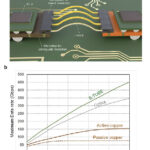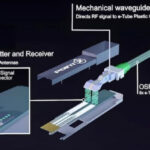When choosing lamp cord or parallel power cord for low-voltage applications like lamps, holiday lights, or small appliances, you’ll often come across SPT-1 wire and SPT-2 wire. While both are widely used in residential and commercial settings, they differ in construction and performance. Understanding these differences helps ensure safety, durability, and proper application.
What Does SPT Stand For?
SPT stands for 'Service Parallel Thermoplastic.' These wires are typically flat (parallel conductors), flexible, and commonly used for light-duty indoor or outdoor applications.
The number that follows — SPT-1 or SPT-2 — indicates the thickness of the insulation and its current-carrying capacity.

difference between spt1 and spt2 wire
Key Differences Between SPT-1 and SPT-2
| Feature | SPT-1 Wire | SPT-2 Wire |
|---|---|---|
| Insulation Thickness | ~0.030 inches (0.76 mm) | ~0.045 inches (1.14 mm) |
| Amp Rating | Typically up to 7 amps | Typically up to 10 amps |
| Durability | Lighter insulation, less durable | Thicker insulation, more durable |
| Weight & Flexibility | Lighter and more flexible | Heavier, less flexible |
| Outdoor Use | Limited (short-term only) | Better for extended outdoor use |
| Cost | Lower cost | Slightly higher cost |
Which One Should You Choose?
Choose SPT-1 if you’re wiring lightweight indoor lighting, like small lamps or temporary holiday lights. It’s more flexible and cost-effective.
Choose SPT-2 when you need a more durable wire for heavier duty or semi-permanent installations, especially outdoor-rated or higher amperage setups.
⚠️ Always check local electrical codes and manufacturer specifications before selecting wire for permanent installations.
Common Applications
SPT-1 Wire:
Table and floor lamps
Christmas lights
Temporary decorative lighting
Extension cords for low-load devices
SPT-2 Wire:
Heavy-duty lamps
Small kitchen appliances
Window air conditioners
Outdoor-rated extension cords
SPT-1 vs SPT-2: Can You Interchange Them?
Although both are rated for 300V, you should not automatically substitute SPT-1 for SPT-2. The thicker insulation of SPT-2 wire provides better heat resistance and is often required in more demanding applications. Using the wrong type may violate safety standards or shorten product lifespan.
Final Thoughts
Choosing between SPT-1 and SPT-2 wire comes down to insulation thickness, ampacity, and usage environment. If safety, durability, and compliance matter, make sure you select the right type for your project.
Looking for SPT Wires?
At TOT Wire & Cable, we offer both SPT-1 and SPT-2 wires with competitive pricing and reliable quality. Whether you need bulk rolls or custom solutions, we’re here to help.
📞 Contact us today to request a quote or get technical assistance.





